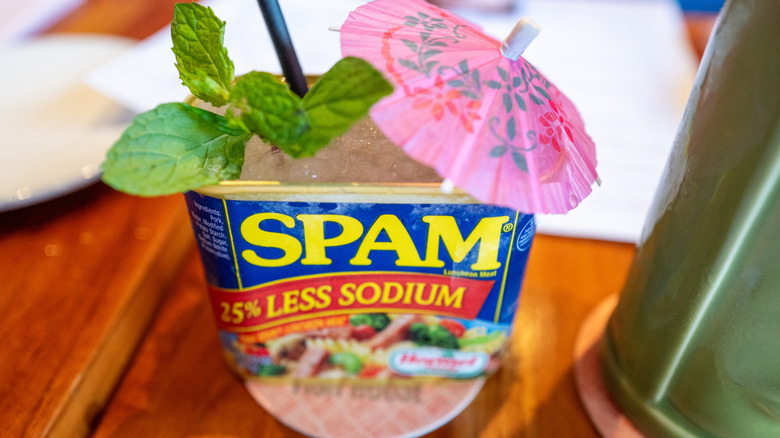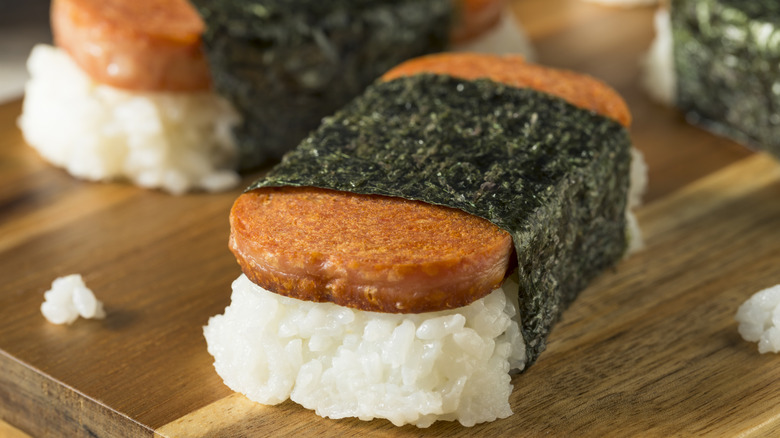Why Is There So Much Spam In Hawaii?
We may receive a commission on purchases made from links.
When you think of Hawaii, you might think of swimming with turtles, lounging on a beach with a mai tai, or surfing in warm, blue water. You may also think of eating Spam. Hawaii consumes more Spam than any other state in America, and the canned meat has truly become ingrained in the culture. You can find it in gas stations — Spam musubi is one of the most delicious reasons to stop at 7-Eleven in Hawaii. You can find it in luxury hotels, such as the Romer House Waikiki, a sophisticated, adults-only hotel in Honolulu, where the restaurant serves Spam on its breakfast sandwich. But how did this canned meat product, first made in the late 1930s in Minnesota, become a comfort food in Hawaiian culture? It has to do with World War II.
Spam was a part of the rations for American soldiers, and Hawaii was an important base during the war. "Wherever American troops went, Spam followed," said Robert Ku, author of "Dubious Gastronomy: The Cultural Politics of Eating Asian in the USA," according to Time.
And Spam stuck around in Hawaii, literally. Its long shelf life (it can last years) was one of the reasons that it gained a foothold in Hawaii. "There's a lot of limitations with Hawaii being so separate from the rest of the U.S. when it comes to food preservation," Scott Gamble, vice president of L.H. Gamble Company, which supplies Spam to Hawaii, explained to USA Today.
Spam musubi is just one way to enjoy Spam in Hawaii
Spam musubi is one of the common ways you'll find Spam prepared in Hawaii. It's basically sushi and similar to Japanese onigiri; a piece of grilled Spam is placed on top of rice and held together with nori (dried seaweed). The origins of this dish are somewhat debated. It may have come out of America's Japanese internment camps in World War II, or it may have been Barbara Funamura, who is credited by some for first making Spam musubi in the 1980s. However the dish came about, it can now be found throughout Hawaii and makes for a low-cost, grab-and-go snack or meal.
You can also find Spam prepared in other creative ways in Hawaii, and there's even an annual Spam festival in Honolulu. The Waikiki Spam Jam is held in late April through early May, and it includes a block party, plenty of food vendors, and some restaurants in Waikiki that feature Spam-specific dishes on their menus. If you're looking to recreate some Hawaiian Spam memories at home, you can find cookbooks dedicated to Spam in Hawaii. "Hawaii Cooks with Spam" is a great choice; one Amazon reviewer from Honolulu said, "Cuisine? Spam? Can you say the two in the same sentence? Yes, you can, and this book proves it, with wonderful recipes that bring out the best in Spam and evoke local Hawaiian color and culture."
For more must-eats in the Aloha State, don't skip a Hawaiian shave ice. Another go-to sweet treat is the malasada, a Portuguese-style fried donut. These five spots have some of the best malasadas in Hawaii.

